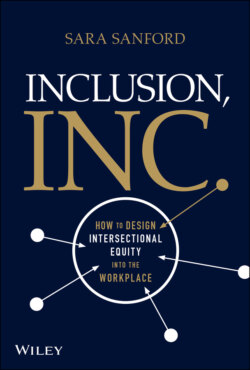Читать книгу Inclusion, Inc. - Sara Sanford - Страница 32
The Future of Work
ОглавлениеWhen I say that Sanaika is the future of work, I don't mean that in a figurative sense. Today in the US, the workforce is 47 percent female.1 Forty-four percent of millennials, who make up the largest portion of the workforce, are non-white,2 and the majority of the US population will be non-white before the year 2050.3 Ten years from now, if you were to randomly select an employee, the odds are good that this workforce representative would look a lot like Sanaika.
Race and gender aren't the only facets of our workforce identity that are rapidly changing. Approximately one in six adults in America is considered to be neurodiverse,4 meaning they experience different neurological functioning than the majority of the population. The age of the average employee is also shifting. Over the past 25 years, the percentage of workers aged 55+ has doubled, and 20 percent of the workforce is now 55 years of age or older.5
Employees are also facing more caretaking demands than previous generations. As longer lifespans have become the norm, more adult children of retirees find themselves “sandwiched” between caring for their own young adult children and their retired parents, who are now living into their late eighties and nineties. According to an AARP survey, 6 in 10 unpaid caregivers also hold paying jobs.6
Finally, a Gallup survey from 2021 found that more adult Americans are identifying as lesbian, gay, bisexual, or transgender with each passing year, and one in six adults in Generation Z identifies as LGBTQ.7
These shifts all impact how employees experience the workplace. DEI is now more than a “nice to have” or a compliance requirement to be minimally satisfied. Getting DEI right means getting access to the next generation of talent.
